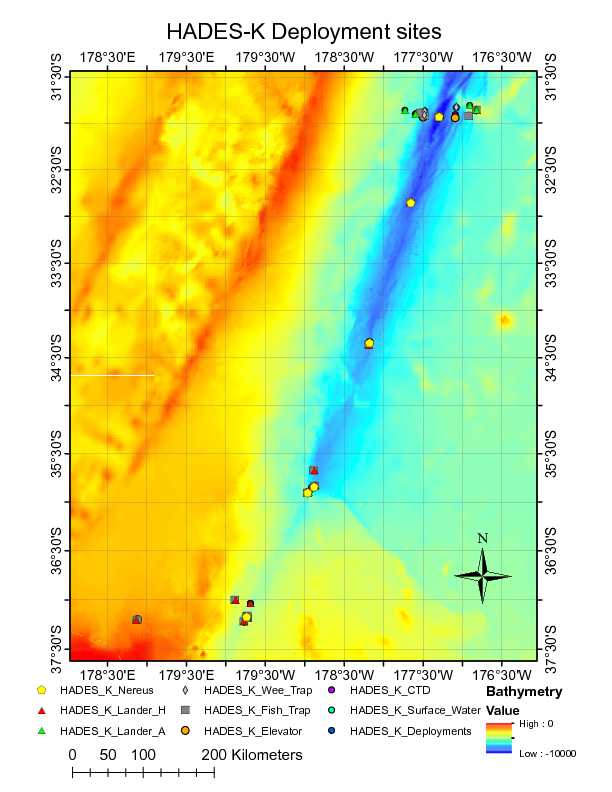Project: Controls on Hadal Megafaunal Community Structure: a Systematic Examination of Pressure, Food Supply, and Topography
Description
Extracted from the NSF award abstract:
Severe technical challenges associated with the extremes of hydrostatic pressure have prevented major advances in hadal ecological studies, and relegated hadal systems to among the most poorly investigated habitats on Earth. Through this project, Hadal Ecosystems Studies (HADES) program, PIs will determine the composition and distribution of hadal species, the role of hadal pressures (piezolyte concentrations, enzyme function under pressure), food supply (distribution of POC with the abundance and biomass of trench organisms, and metabolic rates/energetic demand), and depth/topography (genetic divergence and spatial connectivity of populations) have on impacting deep-ocean community structure. This project will examine these factors using the world's first full-ocean depth hybrid remotely operated vehicle (HROV) in conjunction with the only full-ocean depth imaging lander (Hadal-Lander). This project will provide the first seafloor data and samples in one of the world's best, yet little known trenches- the Kermadec Trench (SW Pacific Ocean). Megafaunal community structure and the relationship between POC and benthic bacterial biomass will be examined as a function of depth and location by systematic high-definition imaging and sediment/faunal sampling transects from abyssal to full trench depths both along and perpendicular to the trench axis. Population genetic approaches will provide levels of genetic divergence and evolutionarily independent lineages to assess the role of depth and topography in trenches and their adjacent abyssal plain in promoting the formation of species. Physiological constraints will be investigated by examining in-situ respiration of selected fauna and tissue concentrations of such protein stabilizers as trimethylamine oxide (TMAO), and the structural adaptations of macromolecules.
Image of NEREUS Deployment Sites. [click on the image to view a larger version]


People
Principal Investigator: Jeffrey C. Drazen
University of Hawai'i (UH)
Principal Investigator: Timothy M. Shank
Woods Hole Oceanographic Institution (WHOI)
Principal Investigator: Paul Yancey
Whitman College
Contact: Timothy M. Shank
Woods Hole Oceanographic Institution (WHOI)
Data Management Plan
Prjct_Dscriptn_Shank_Drazen_Yancey_OCE-1130494_1130712_1131620.pdf (676.06 KB)
02/09/2025
